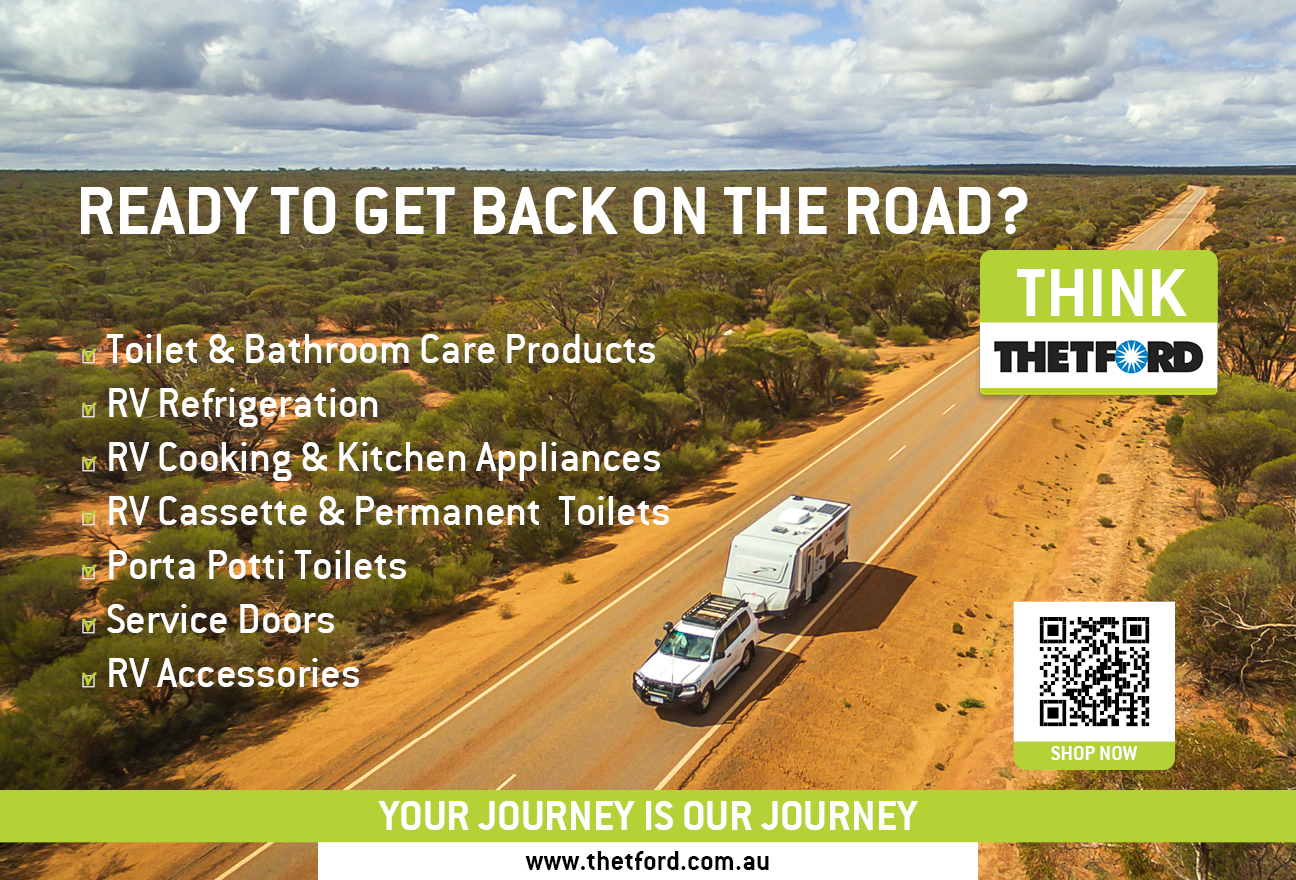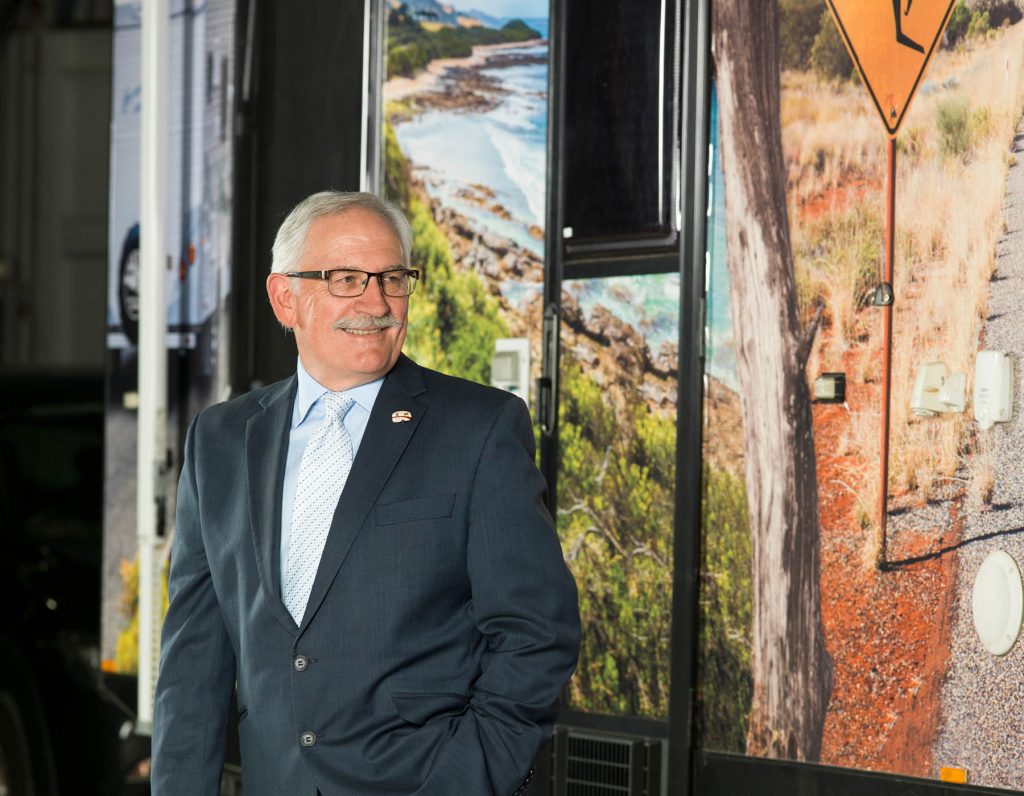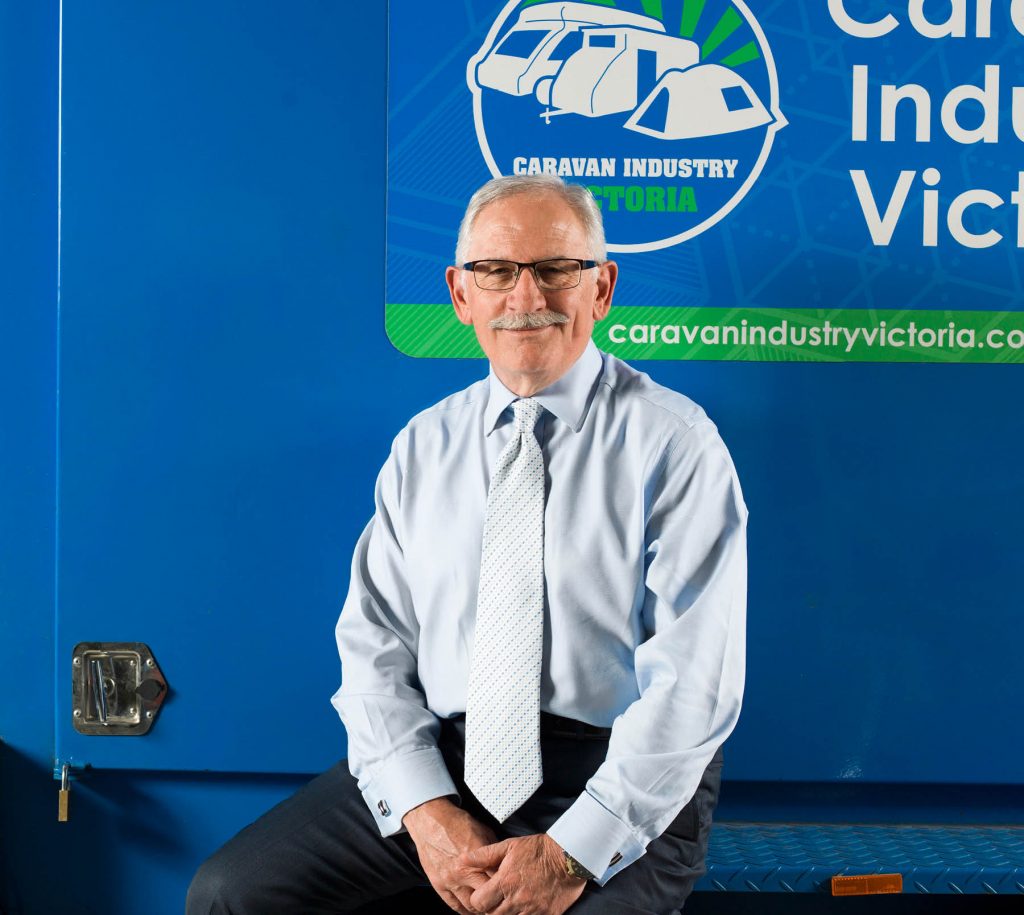Language
You can read the magazine in one of the following languages
With its raw landscapes and breathtaking diversity, Australia is a land made for exploring. And what better way to experience its natural beauty than by camping out under the stars? Whether in a tent or a campervan, it’s a back to basics style of travel that has returned to the spotlight as the COVID-19 pandemic scuppered overseas travel plans.
Rob Lucas, former Caravan Trade & Industries Association Victoria (CIAVIC) CEO and recently appointed the organization’s Chief Executive of the National Caravan Industry Training College, was surprised but excited by the enthusiasm in the community.
“We just could not possibly predict the reaction and how many people, for the first time, said, ‘You know what? We’re going to do this’,” Lucas tells The CEO Magazine.
“They had a good, hard look and went, ‘You know what? This will be our chance to travel Australia, travel our state. And yep, we’re going to do this.’ How good is that?”

A self-proclaimed “caravanner”, Lucas is well acquainted with this lifestyle, having owned his own caravan for the best part of 20 years. But when he took over as CIAVIC CEO in 2011, with almost two decades of association experience under his belt, he found that the industry itself didn’t truly understand its contribution to the Victorian economy.
“It saw itself as a cottage industry and it didn’t see itself as a homogenous industry,” he recalls. “That was one of the first challenges I tackled.”
Starting with the facts around size and economic contribution, Lucas and his team discovered the industry contributed US$331.4 million to the Victorian economy and employed around 5,000 full-time employees. Furthermore, 90 percent of all caravans and recreation vehicles made in Australia were manufactured in Victoria.
Armed with this information, they approached the government with a case for creating what is now known as the ‘Victorian Caravan and Camping Industry Blueprint’, which was released in 2012. The 10-year strategic plan not only gathered data around the industry but mapped out the big changes needed over the next decade to move the industry forward.
“The industry was going OK, but there were a number of structural issues that I encountered when I first came into the role,” Lucas says. Among those were education and training, as well as identifying better opportunities for collaboration.

“The industry was going okay, but there were a number of structural issues that I encountered when I first came into the role.”
“The plan came out with about 44 major items of action, and we were very fortunate that it took us about eight years to complete that plan. We have fundamentally shifted the industry.”
Also in 2012, just a year after Rob joined the association, it launched its first hall of fame gala evening for over 400 people. “It brought everyone together. Everyone started to feel good about the industry and they heard the histories of our pioneers,” he reminisces. Last year marked the 10th annual event which was held at Melbourne’s Crown Palladium with more than 500 people in attendance.
It’s a clear sign that the industry no longer views itself as a cottage industry and is starting to professionalize, according to Lucas. “It could be argued that the caravan and camping industry’s always been in a pretty good place,” he reflects. “We’ve been producing manufactured numbers that most manufacturers anywhere in Australia would be envious of: 5-to-10 percent growth year on year.”
And as the industry has grown, so too has the association. It started with three people in the office and a turnover between US$2.5–2.6 million. Now, it has 13 members of staff and turns over US$5.3 million.
“We’ve also grown in ways that just keep adding value to the members,” Lucas explains. While the association has been running caravan and camping shows to promote its members and the industry as whole since 1954, it continues to innovate to ensure these shows not only survive but excel.
“Some of our members get 40 percent of their sales for the year from our caravan shows and we take that role really seriously,” he says. Currently, the association produces four caravan and camping shows with its flagship event, the Victorian Caravan, Camping and Touring Super Show, effectively taking 12 months to organize.

“The boom, so to speak, is strong, and it’s hard to see an end for the foreseeable future whilst it’s still expensive to travel overseas.”
“We’re very conscious that in any one year, we’ll get between 110,000 and 120,000 people through our four caravan shows,” Lucas says. “The shows are about espousing the lifestyle and the experience, but also they are the only place where you get to see the full range of product and the full range of accessories.”
It’s valuable experience that will serve Lucas well in his new role in the National Caravan Industry Training College, which he commenced at the end of January. “It’s the only training college in Australia totally dedicated to the caravan and recreational vehicle industry,” he says. “I will be shaping the future of the caravan industry through education and training.”
And it’s a future that looks bright, particularly as uncertainty around overseas travel continues to lurk. “There are still countries not vaccinated, and there’s a whole stack of stuff that is just playing on people’s psyche,” he says.
“The boom, so to speak, is strong, and it’s hard to see an end for the foreseeable future whilst it’s still expensive to travel overseas.”
